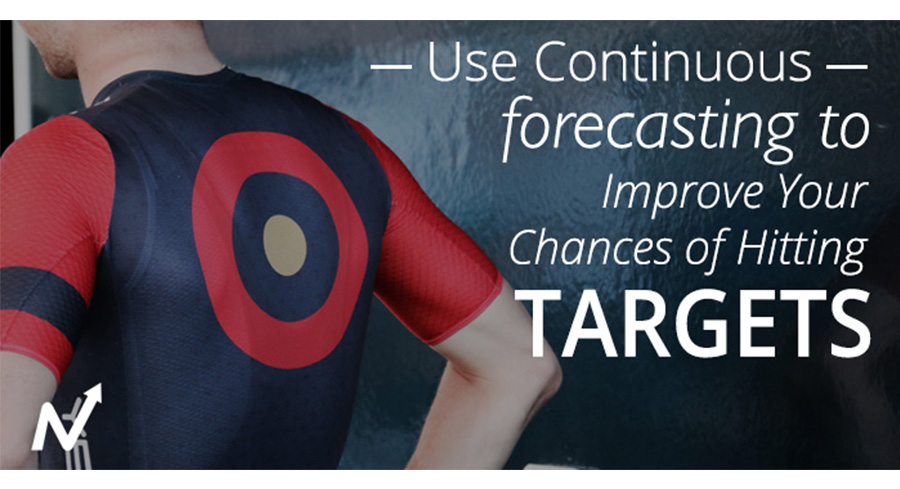This post originally appeared as a guest post with Smart Selling Tools.
Forecasting is an evidence-based process that weights all the available evidence. The role of the forecast is to show what is probable and realistic, and it should confirm that set targets are achievable. It’s often the case that targets are set ahead of time and are not supported by hard evidence, e.g. this year’s target is, “last year + 10% because we feel good about the business and have some evidence of increased demand.”
The forecast should be built using analytics rather than being a simple extrapolation of what’s in the pipeline. Analytics is used to interpret the opportunities, apply weighting based on historical data, and with this approach a more accurate and considered forecast is produced.
The best sales and sales operations leaders know the business can change quickly, and to be successful they need to be able to make course-corrections along the way by adopting a continuous forecast methodology. The forecast must be continuously evaluated throughout the quarter, in the same way the opportunities in the pipeline are. Forecast, collaborate, analyze, and improve performance, hit targets—then do it all over again. Without monitoring the forecast, there’s a risk that it will go off track and there will be no one there to take action and make course-corrections.
Frequently Revisit and Update Short and Long-Term Forecasts
A common complaint in organizations is that the forecast is an onerous and time-consuming task. In fact, it can take 12 hours or more each month to modify and correct spreadsheets. In some cases, forecasting can take up to a day per week to complete per salesperson, which equals 20% of each individual’s working week spent on non-revenue generating activity.
Why does this matter? When the forecasting process is onerous and time-consuming, there’s a risk that the data will quickly become obsolete and what informs the forecast isn’t accurate information.
Forecasts should be updated frequently on a stated cadence and one of the benefits of continuous forecasting is the possible re-evaluation of targets. If the forecast continues to contradict the target, then it might be time to communicate a revised target to your sales team and other stakeholders.
Track Forecasts and Implement an Early Warning System
There’s an issue within organizations when it comes to trust, more specifically, trust in the final forecast number. Managers will question the forecast number for a variety of reasons, whether it be salespeople who have consistently missed the mark for forecast accuracy, or a disappointing end for quarterly targets that didn’t match the forecast. Continuously tracking the forecast throughout the quarter ensures there are no last-minute surprises and gives management enough time to create a new plan if the data indicates a forecast is likely to be missed.
Not only should quarterly and yearly forecasts be tracked, but you should also track each month’s commitment by salespeople. If you track each month’s commitment by salespeople, you leave less for bias and sandbagging to creep in. Salespeople will begin to understand they are accountable for the number they’ve given and there could be potential consequences if the delivery continually misses that commitment.
Final Tips: Invest in the Forecast from the Start and Make it a Team Priority
According to AMR Research, even a 3% increase in forecast accuracy increases profit margin by 2%. Continuous forecasting creates a process that is much faster, and finance is able to reduce cycle time.
All of this sounds great, but if forecasting isn’t a priority from the start and your sales team isn’t invested, issues with the process and inaccuracy will continue to persist. There needs to be training which can take place during weekly sales meetings, monthly one-on-one business reviews, or other coaching environments. To get your team invested from the start, this needs to be an ongoing process and not simply discussed from time to time or in an urgent ad-hoc way. Make the forecast a commitment so it becomes much more predictable and you improve your chances of hitting the target.
David is the CEO of Vortini and is an experienced executive with extensive software and startup experience. He has over 30 years’ experience in various roles all in the enterprise software industry. Now his focus is sales forecasting and analytics.

